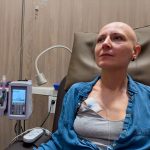Breast cancer treatment shrinks brain volume, with changes persisting for years
 (NaturalHealth365) Something troubling has emerged from a three-year study that followed breast cancer survivors after chemotherapy. Russian researchers used high-tech brain scanning on 86 women and discovered that conventional cancer treatment shrinks the brain, and the damage doesn’t heal over time.
(NaturalHealth365) Something troubling has emerged from a three-year study that followed breast cancer survivors after chemotherapy. Russian researchers used high-tech brain scanning on 86 women and discovered that conventional cancer treatment shrinks the brain, and the damage doesn’t heal over time.
This isn’t about temporary side effects that go away. We’re talking about measurable brain tissue loss that shows up clearly on scans and keeps getting worse years after treatment ends.
The study, published in Pathophysiology, compared breast cancer survivors to healthy women of the same age. What they found should make anyone considering chemotherapy think twice about what they’re signing up for.
Chemo brain has a real physical cause
Most cancer patients know about “chemo brain” – that awful mental fog, memory problems, and inability to concentrate that hits during treatment. About 80% of breast cancer patients deal with this, and doctors have often brushed off these complaints as psychological.
This research proves that unwanted symptoms come from actual brain damage. The Russian team used something called voxel morphometry, which measures brain tissue down to tiny cubic millimeters. This technology can spot damage that regular MRI scans completely miss.
They scanned the women twice – once within six months of finishing chemo, then again three years later. What they saw was devastating.
The brain damage keeps getting worse
Total brain volume dropped significantly in cancer survivors. Healthy women averaged 1,221 cubic centimeters of brain tissue. The cancer survivors measured just 1,165 cubic centimeters after treatment, then dropped even further to 1,134 cubic centimeters three years later.
Think about that for a minute. These women lost nearly 90 cubic centimeters of brain tissue and never got it back.
The cerebellum, which controls balance and coordination, was particularly affected. This explains why 42% of the women reported walking problems and 31% dealt with dizziness. Areas controlling memory, attention, and decision-making also showed major shrinkage.
White matter, which connects different brain regions, also suffered serious damage. This explains why patients struggle with multitasking and thinking quickly – their brains literally can’t communicate between regions as efficiently anymore.
No signs of recovery
Here’s the really scary part: after three years, there was zero evidence of healing. None. Some brain regions actually continued shrinking.
Even three years after finishing treatment, the numbers tell a stark story. Four out of five women still struggled with memory issues, while three out of four couldn’t focus like they used to. Nearly half had trouble finding the right words when speaking. More than half battled persistent headaches that just wouldn’t go away.
The brain scans backed up every single complaint. This wasn’t psychological – the damage was right there in black and white.
Rethinking the whole approach
Most of these women went through complex chemotherapy protocols. When you see this kind of permanent brain damage, the whole cancer treatment paradigm starts looking pretty questionable.
Instead of accepting that cancer treatment has to wreck people’s brains, what if we focused on stopping cancer before it starts? The evidence suggests this makes way more sense than waiting for tumors to show up and then carpet-bombing the whole body with toxic chemicals.
Go after what actually causes cancer: Cancer doesn’t just randomly appear. Chronic inflammation sets the stage. Hormone levels get out of whack. The immune system stops doing its job. Toxic chemicals accumulate over decades. Address these fundamental problems early, and cancer might never get a foothold.
Support your natural defense systems: Every day, your immune system finds and destroys abnormal cells that could become cancerous. Real food, proper stress management, adequate sleep, and targeted nutrition keep these defense systems running at peak performance.
Reduce chemical exposure: Pesticides on food, heavy metals in water, industrial chemicals in household products – this toxic soup creates perfect conditions for cancer. Aggressive detoxification combined with avoiding ongoing exposures could dramatically reduce risk.
Balance hormones without drugs: Estrogen dominance drives many breast cancers, but Western medicine waits until cancer develops before addressing hormonal issues. Natural hormone balancing addresses underlying causes rather than waiting for consequences.
Create an anti-cancer metabolic environment: Cancer cells thrive on sugar and flourish in metabolically dysfunctional environments. Controlling blood sugar and optimizing mitochondrial function create conditions where cancer struggles to survive.
Eliminate hidden infections: Chronic infections create inflammatory environments that promote cancer development. Comprehensive testing and treatment of these hidden problems removes major cancer risk factors.
Time for a different approach
This study validates what countless cancer survivors have been saying for years – their cognitive problems are real and devastating. More importantly, these findings show why preventing cancer through comprehensive health optimization beats treating it with brain-damaging chemicals.
Understanding these mechanisms opens doors for better prevention strategies that could help women avoid both cancer and its devastating treatments altogether.
Concerned about chemotherapy’s devastating effects on brain health and looking for safer alternatives? Get access to Jonathan Landsman’s Stop Cancer Docu-Class – featuring 32 expert presentations from leading cancer specialists sharing natural strategies for cancer prevention and treatment without toxic side effects. Discover evidence-based approaches to strengthen immune function, eliminate cancer-causing toxins, address root causes of cancer, and support the body’s natural healing mechanisms. Learn how to create optimal health conditions that prevent cancer development and avoid brain-damaging treatments altogether.
Sources for this article include:



